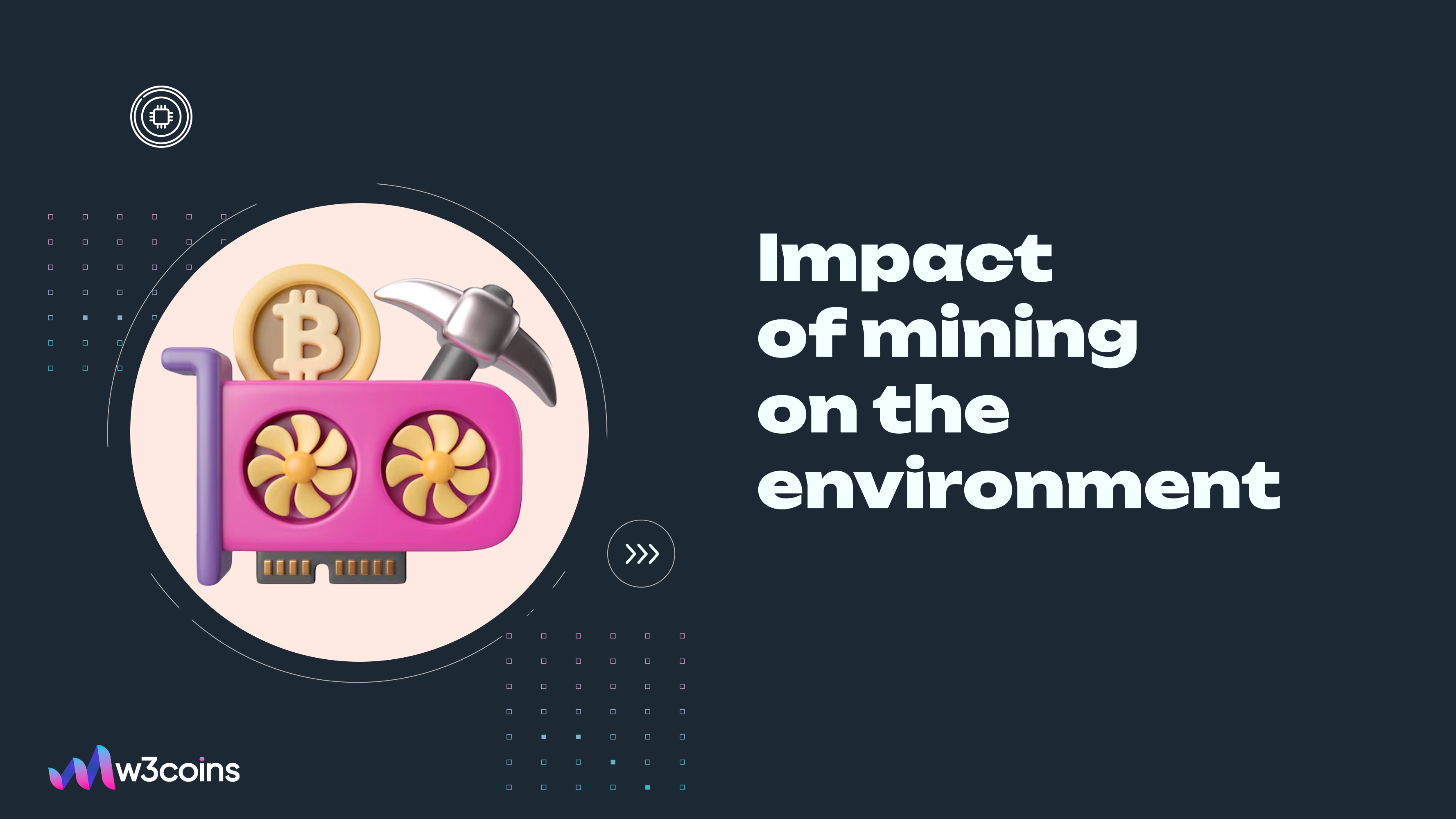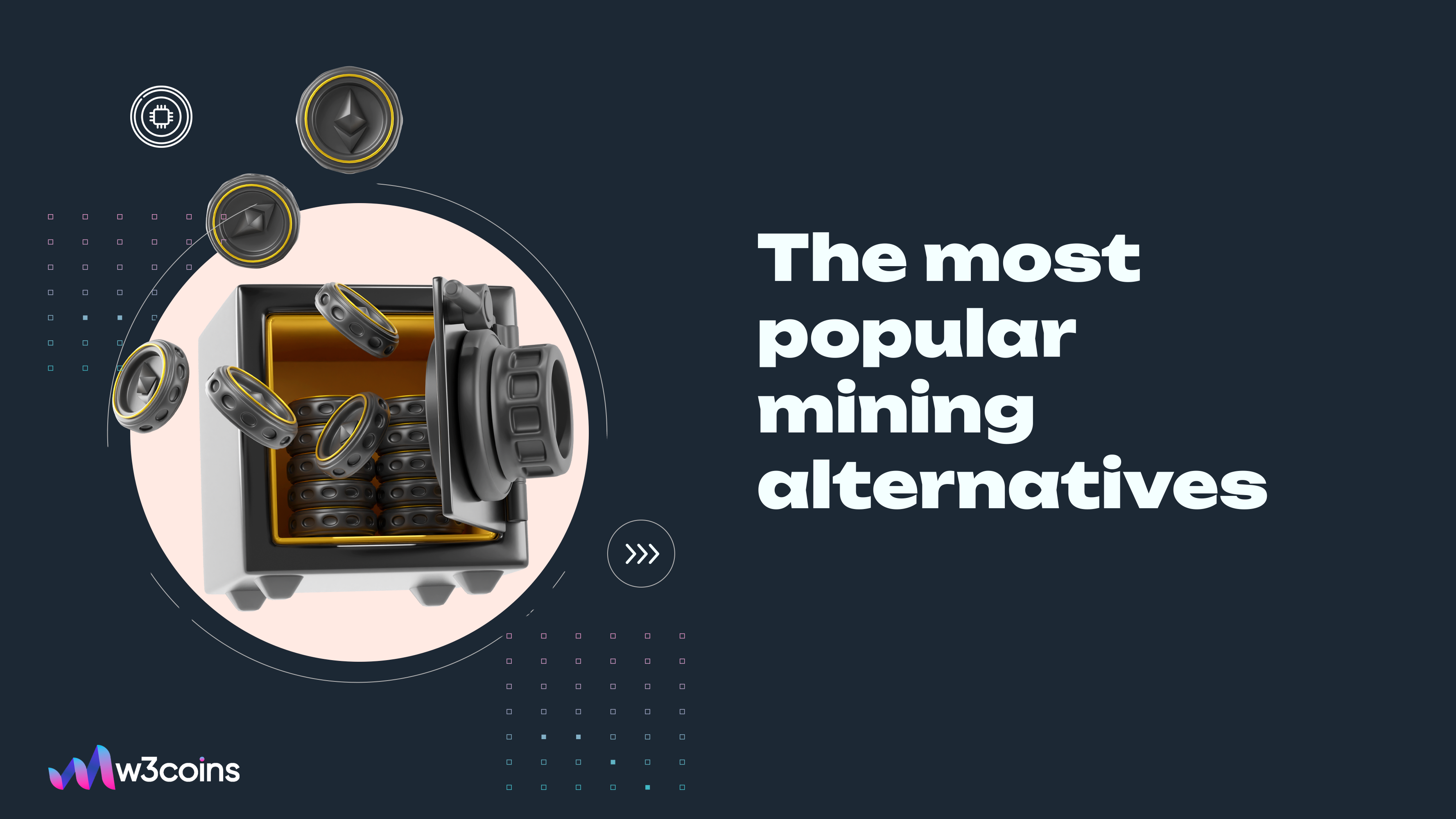As cryptocurrencies have developed, they have become increasingly surrounded by myths, stereotypes, and prejudice. The first wave of mining attracted the attention of not only crypto enthusiasts, but also people who were negative about the impact of cryptocurrency mining on the environment. Today, years after the first surge in the popularity of mining, there are still many skeptics who are negative about cryptocurrency mining because of the negative impact of mining on the environment, as they claim.
The critics' position is based on the fact that mining consistently consumes a large amount of energy, which has a detrimental effect on the carbon footprint. In this article, we will explain the relationship between cryptocurrency mining and the environment, and examine the most common myths and eco-friendly alternatives to classic mining.
Impact of mining on the environment

The functioning of blockchains that use the Proof Of Work consensus (e.g., Bitcoin) does have an impact on the environment. The main reason for this is the mechanism for creating new network blocks, namely mining in the PoW consensus.
Simply put, cryptocurrency mining involves solving mathematical problems using mining farms consisting of specialized devices (central processing units (CPUs), graphics processing units (GPUs), and application-specific integrated circuits (ASICs)) to validate and add new blocks to the network. The user or group of users who are the first to solve the problem using their hardware receive tokens as a reward, as mining involves the creation of new coins. Since there is a lot of competition among users as to who will get the tokens, they create ever larger mining farms, which in turn consume electricity.
Therefore, the main negative impact of classical mining on the ecosystem is excessive energy consumption, which in turn is generated by fossil fuel power plants. According to experts, bitcoin mining consumes about 91 TWh (91 billion kWh) of energy per year. Hence, we can calculate that the annual carbon footprint of bitcoin mining is 85 million tons of CO2 (which is 0.2% of global carbon emissions). This figure corresponds to the carbon footprint of a small country.
Still, mining is not as bad as the statistics describe. Already today, about 54.5% of the energy consumed by mining farms is generated from renewable sources. If you are a person who is looking for environmentally friendly investments to add to your investment portfolio, mining may still be right for you. For example, Bitcoin mining and Bitcoin itself can be considered ESG-oriented, despite all the criticism from environmental activists. Bitcoin encourages users to use renewable energy sources, supports economic decentralization, and even helps to stabilize power grids.
The most popular mining alternatives

Mining technologies do not stand still and are developing at the same pace as the entire cryptocurrency industry. As we told you above, the eco-friendly movement is no less popular in mining than in other industries. The use of green energy makes mining more profitable and is welcomed by the community.
But despite the popularity of classic mining, many alternatives have a more positive impact on the environment. In this section, we will tell you more about green mining and analyze what is wrong with the Proof Of Work consensus.
Green mining
The most popular blockchain networks that use the Proof of Work (PoW) consensus consume a lot of energy, and this cannot be changed because this is how they work (high energy consumption can be reduced by using Layer2 solutions, as we discussed in our previous article, but the operation of the equipment will still require a large amount of energy). Once again, as of April 02, 2024, bitcoin mining is responsible for approximately 85 million metric tons of CO2 emissions annually, but these numbers are nothing compared to other industries. It is predicted that even with the global popularization of other consensus solutions, the PoW architecture of Bitcoin is likely to persist.
Rational users are already developing green mining among the crypto enthusiast community. However, all mining participants expect a reward (e.g., BTC tokens when mining Bitcoin) that will cover their expenses for equipment maintenance and allow them to earn money. This is the incentive that has worked since the inception of the Bitcoin blockchain and has encouraged thousands of disparate miners to work on creating a decentralized blockchain registry.
Thanks to the coordinated work of decentralized users, it became possible to build an available, secure, and fault-tolerant blockchain registry. In other words, it was the PoW consensus mechanism that proved successful and became the foundation for all subsequent blockchains and networks. From here, we can build a new strategy for modernizing the community, which will encourage it to build similarly reliable but environmentally friendly registries.
Already today, you can find many companies promoting clean energy verification platforms used by miners. This makes it possible to distinguish among the mass of miners developing low-carbon ecosystems that modernize classic mining. Such “green miners” receive additional rewards for their working principle and thus popularize the use of renewable energy among the entire community. Therefore, it is through additional rewards for environmentally friendly mining farms that the entire old-school mining community can be transformed.
Cryptocurrency staking
Staking is another option for confirming transactions and creating new blocks in the blockchain network. This consensus does not require powerful hardware or high energy costs. The most prominent example of using the Proof of Stake consensus is Ethereum. After it switched from PoW to PoS consensus in 2022, the network's energy consumption was reduced by more than 99%.
Instead of solving complex mathematical problems as in mining, stakers keep a portion of the cryptocurrency on special wallets known as staking wallets, which support the functioning of the entire network. It is staking that ensures the security of blockchains with PoS consensus, which has a positive impact on the introduction of blockchain technology in other areas of our lives. Since validators are obliged to reserve their tokens, they are guaranteed to act in the interests of the network and develop it while ensuring its security.
In networks with PoS consensus, it is the stakers that are chosen to verify transactions. The main criteria are the number of tokens they own and the time they have been in the network. In other words, the more tokens a staker has and the longer they reserve them on a special wallet, the greater their chances of becoming a selected validator and receiving a portion of the tokens as a transaction confirmation fee.
Reserved stakeholder tokens act as a deposit, so they cannot be used for trading, transferring to other wallets, or for other transactions. Stakeholders are interested in reserving their tokens because the amount of reserved tokens affects their chances of receiving commissions, just as miners receive tokens for mining.
Popular cryptocurrencies that support staking include: Ethereum, Cosmos, Agoric, Chromia, and many others. Holders of tokens that support staking get the opportunity to participate in the management of the network and receive a reward for ensuring its security.
Other popular alternatives

In addition to green mining and staking, there are other options to keep the blockchain running while reducing energy consumption and carbon footprint. Let's take a quick look at the other most popular alternatives:
Using the Proof of Space (PoSp) and Proof of Capacity (PoC) consensus
These algorithms use free space on hard drives to participate in mining. Their advantages are significantly lower power consumption than PoW, and the most popular cryptocurrency using this consensus is Chia (XCH).
Proof of Burn (PoB) mechanism
This approach requires “burning” some tokens (sending them to a non-recoverable address) to participate in mining. It is considered more environmentally friendly as it reduces energy consumption.
Decentralized computing (Proof of Useful Work)
This is a concept in which mining equipment performs real scientific or technical calculations instead of hash selection. The advantage is the use of energy for socially useful purposes. This includes all projects that model proteins, climate or compute for artificial intelligence.
Hybrid consensus models
Combining different consensus models (e.g., PoW and PoS) reduces energy consumption and makes blockchains more environmentally friendly.
Utilization of “waste energy”
This approach utilizes excess energy that would otherwise be lost. For example, mining uses “flare gas” in oil and gas fields.
What does the future hold for classic mining?

Blockchain and cryptocurrency technologies have already changed the modern economy and digital infrastructure. However, as you can imagine, classical mining, especially on a large scale, has a significant impact on the environment due to the huge electricity consumption. At the same time, the development of sustainable alternatives, such as the use of renewable energy, the transition to the Proof-of-Stake consensus, and green mining farms, is opening the way to a sustainable future.
Innovations in blockchain technology, shifting to less energy-intensive consensus, and supporting green technologies are key steps to reduce the impact on the ecosystem. The balance between technological progress and environmental sustainability can only be achieved through the joint efforts of all industry players. Given the significant popularization of the eco-friendly movement in recent years, we can confidently say that even if mining does not disappear, it will undergo drastic changes that will make it more advanced and energy-efficient.